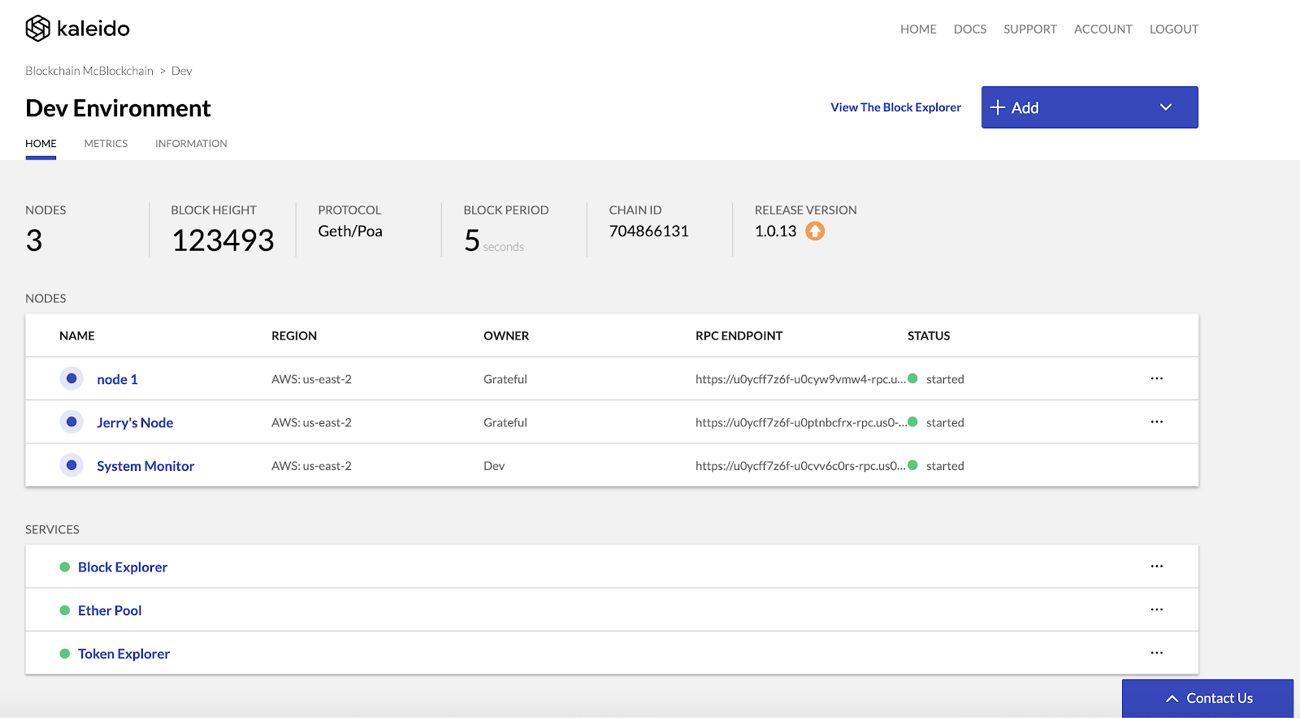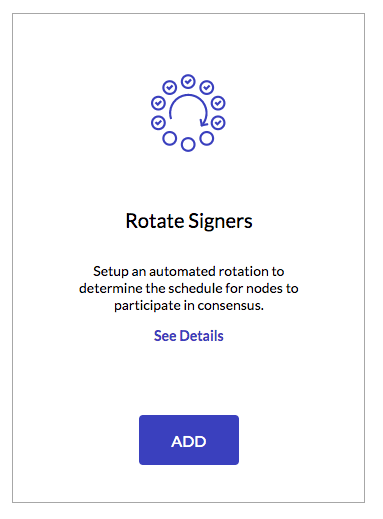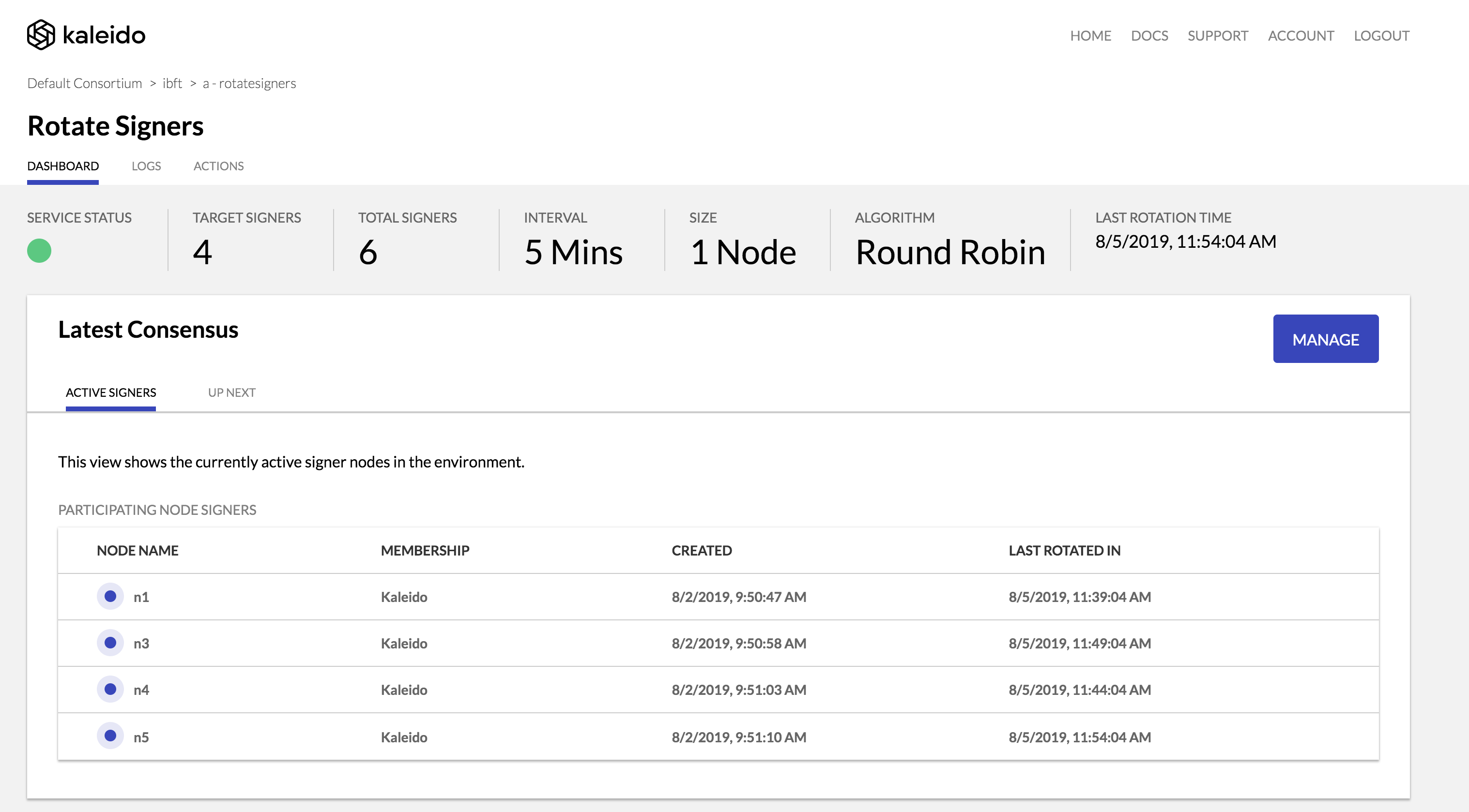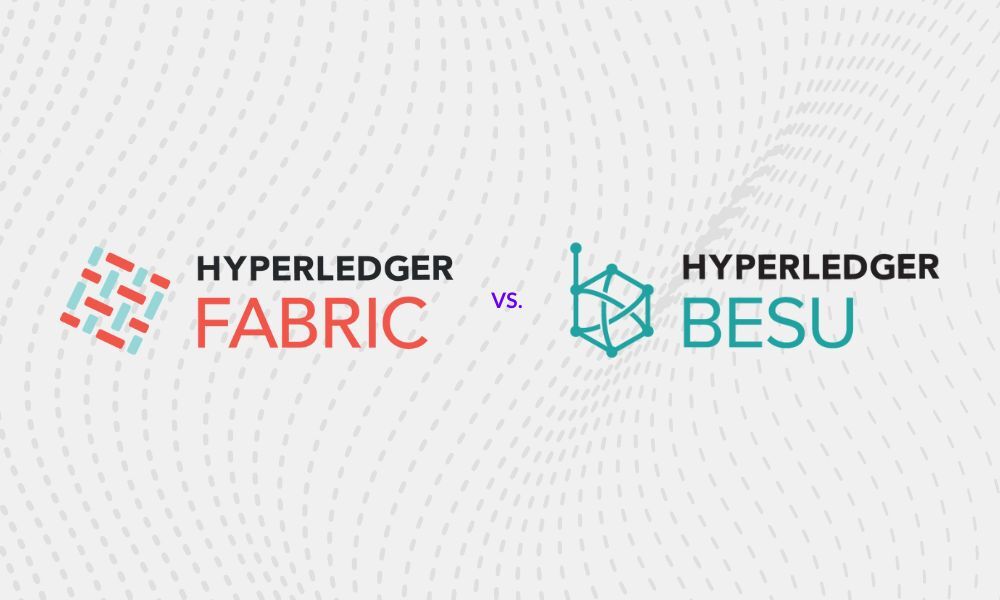

Enterprise blockchains are diverse, and can be built using a number of different technologies and protocols. Consensus algorithms are an example of this: depending on the objectives, member requirements or technology mandates, different consensus algorithms can be used to achieve collective agreement across member nodes on the state of a transaction.
Many enterprise consortiums use IBFT, a great solution for reaching consensus in an untrusted environment. This protocol relies on a 3-phase voting protocol where the number of messages exchanged to achieve consensus grows exponentially as the validator set grows. To allow fully decentralized governance while keeping the communications overhead low, Kaleido launches a new feature, Rotate Block Signers in the marketplace.
Many enterprise consortiums choose Istanbul Byzantine Fault Tolerance or IBFT, a great solution for reaching consensus where trust among members should not assumed. A byzantine algorithm gives a member of the consortia assurances that a small number of bad actors can’t change the outcome of which transactions are considered valid.
This “trustless” attribute of the network comes with a downside: an increase in the amount of chatter and coordination required to produce a new block. And adding in each additional validator node compounds the situation, creating real and practical limits on how many nodes can participate as validators. Practically speaking, IBFT validator sets cannot scale beyond 16 validator nodes forming consensus at any point in time. That’s a hard limit to protect your network from gridlocking itself.
For a deeper look at IBFT and comparisons to other consensus algorithms, go to our article Consensus mechanisms: IBFT vs PoA vs Raft.
We introduced Rotating Signers - another industry first from Kaleido. This new service allows you to rotate the group of validators used in an IBFT implementation, enabling broader participation by the consortia members. Using this new service, you can:
This flexible new service provides a simple way to ensure equality of participation for consortia that grow to hundreds of participants. And just like every other service from Kaleido, there’s an API that allows you to do everything you can do in the console, including a query API to immediately see who comprises the group of singers on current and future rotations.
Learn more about Kaleido's Rotating Block Service
To enable the Rotate Signers service, just click on the purple “Add” button, then choose “Add Services”.

Click on the purple “Add” button on the Rotate Signers tile.

Configure the Rotating Signers service with your choice of values for:

Once you enter your preferred values, click on the “Activate” button. You are now enrolled in the Rotate Signers service.
That’s it! You are now using the new service.





Your guide to everything from asset tokenization to zero knowledge proofs
Download Now

